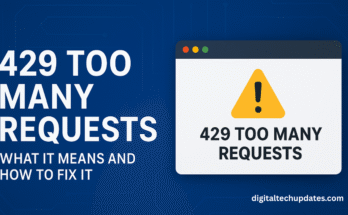Mobile connectivity has changed dramatically over the past two decades. From the early days of 3G networks to the widespread adoption of 4G, every new generation of mobile technology has made it easier to connect, communicate, and work on the go. Now, 5G data represents the next step in that evolution, offering faster speeds, stronger connections, and improved reliability for everything from smartphones to smart homes.
With greater access to affordable phone plans, users can experience these advanced capabilities without major cost barriers. This article will cover what 5G data is and how it differs from the networks that came before it.
What Are Mobile Data Networks?
The “G” in 5G stands for “generation.” Each generation of wireless communication has marked a major advancement in how data travels between devices. The first generation, 1G, supported only voice calls. 2G introduced texting, while 3G made mobile internet access possible. The arrival of 4G transformed the mobile experience by making video streaming, navigation, and real-time apps widely available.
5G builds on this foundation by creating a more capable and intelligent network. It delivers faster data transfer speeds, reduced lag times, and a higher capacity for connected devices.
Unlike previous generations, 5G is designed to handle personal smartphones and an expanding network of devices from smart appliances and vehicles to industrial sensors and medical tools. This broader connectivity makes 5G a key technology for the future of communication and innovation.
How Does 5G Data Work?
At its core, 5G data transmission relies on radio waves (just like earlier generations) but uses them in a more advanced way. Traditional networks use lower-frequency bands, which travel long distances but can become crowded and slower when many users are connected. 5G introduces higher-frequency signals, known as millimeter waves, that can carry more data at once and at much greater speed.
However, these higher frequencies have a shorter range and can be blocked by obstacles such as buildings or trees. To overcome this limitation, 5G networks use a dense network of smaller cell towers and transmitters to maintain strong and stable coverage. The technology also employs innovations such as beamforming, which directs signals precisely toward each device, and network slicing, which allows one network to serve multiple types of connections simultaneously without interference.
Together, these improvements make 5G more adaptable and capable than any previous mobile data system. It can deliver the speed needed for advanced uses while maintaining reliability in crowded urban areas and large-scale infrastructure networks.
What Are the Key Advantages of 5G?
One of the most recognized advantages of 5G is speed. Depending on the available spectrum and network setup, it can provide download and upload rates several times faster than 4G. This means movies, files, and updates that once took minutes to download can often be completed in seconds.
Another major advantage is latency, the delay between sending and receiving data. 5G networks have extremely low latency, often measured in just a few milliseconds. This improvement allows for near-instant response times, which is critical for applications such as remote healthcare, real-time gaming, and autonomous vehicle communication.
In addition to speed and latency, 5G can support far more devices on a single network. As households, businesses, and cities adopt more connected devices, the ability to handle large volumes of simultaneous connections becomes essential. 5G technology was specifically built with this in mind, making it possible to maintain performance even in busy locations such as stadiums, airports, or city centers.
The benefits appear in everyday experiences for consumers. Video calls remain stable even with multiple users connected. Streaming services run smoothly in high definition. Mobile applications load quickly and operate without lag. For businesses and public services, 5G opens opportunities for automation, smart infrastructure, and advanced data analysis, creating new levels of efficiency and reliability.
Debunking Common Misconceptions About 5G
Because 5G is a relatively new technology, it has inspired some misunderstandings. One of the most common is the idea that 5G only represents faster smartphone internet speeds. While speed is one benefit, 5G’s true impact lies in its ability to connect multiple devices and manage data flow efficiently. It enables communication between machines, vehicles, and sensors in ways 4G cannot.
Another misconception relates to safety. All wireless technologies operate under strict global standards that regulate frequency levels and power limits. 5G networks use non-ionizing radiation, which means they do not carry enough energy to damage biological tissue. Regulatory agencies worldwide have confirmed that 5G technology meets established safety guidelines.
The Next Step in Connection and the Power of 5G
5G data marks a turning point in mobile communication. It brings efficiency, reliability, and scalability to the networks that shape daily life. By improving how information travels, 5G allows for innovation in industries, communities, and personal technology.




